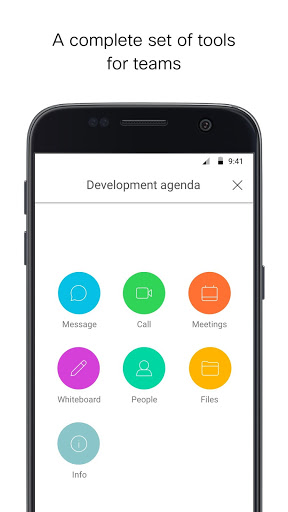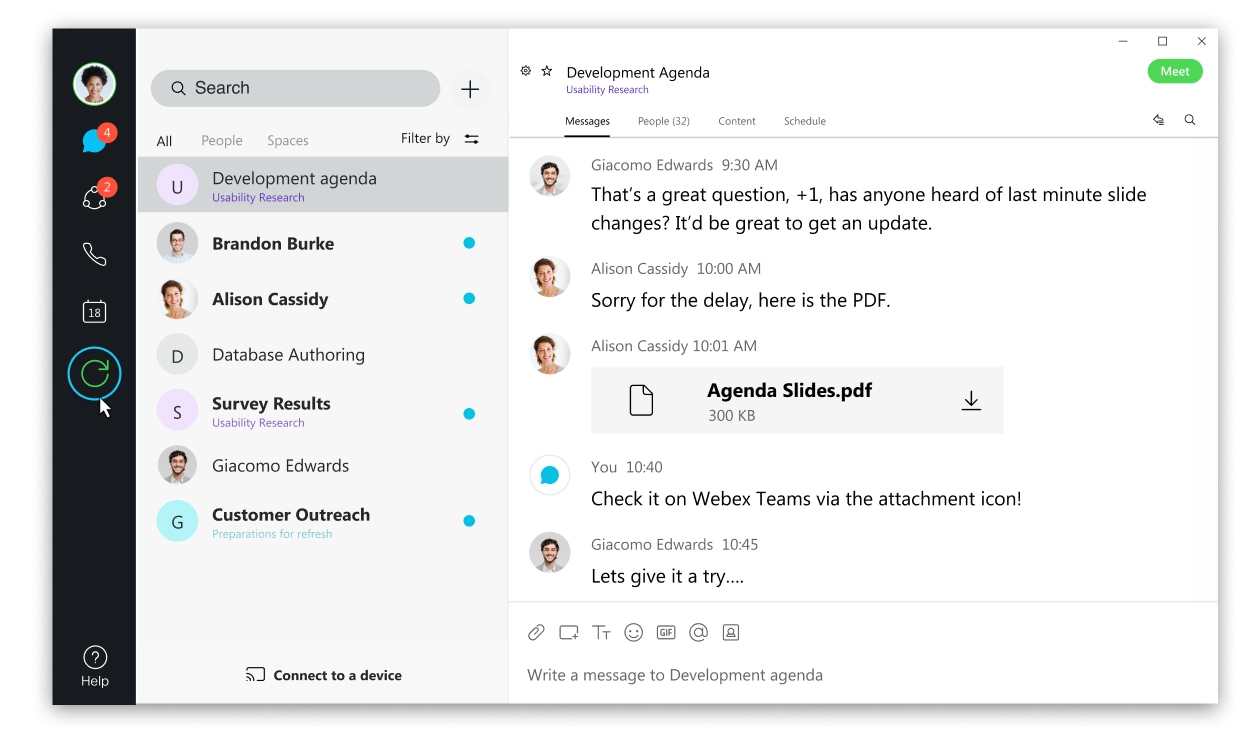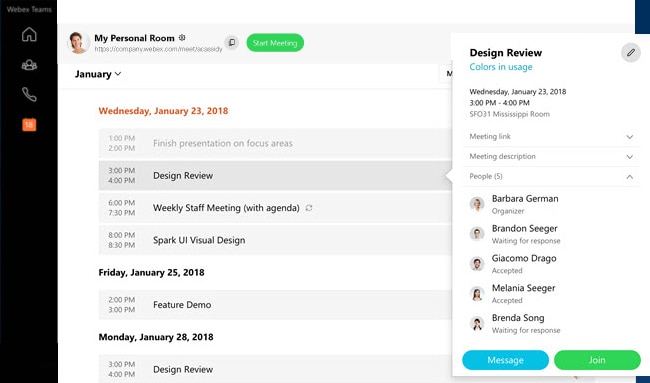The move to cloud collaboration is the single biggest change to the way enterprises communicate since Cisco revolutionised the private branch exchange (PBX). Back then, we pioneered voice over IP, then telepresence and unified communications. The change to cloud promises to be even more significant. Cloud technology makes it possible to deliver new, cognitive collaboration user experiences. It allows seamless integrations with your business applications. It drives increased business value through advanced telemetry analytics capabilities. That is not to mention new capabilities which are yet to be imagined.
We are innovating to help organisations change the way they work with our cloud solutions. But we know from experience that transitioning to cloud collaboration may take longer for some organizations, compared to others. Many are moving to the cloud now. And if that’s you – we’re ready to help you transition as fast as you are ready to. For others, significant functional requirements, compliance or operational policies mean that it may be years before all your applications can move to the cloud. Indeed, some may not be able to adopt cloud solutions for the foreseeable future. Every organisation has their own challenges and priorities. No one size fits all. That’s why our strategy is cloud first, but not cloud only. We will continue to deliver the best, most secure on-premises collaboration experiences. At the same time, we will enhance the value of your investments by connecting to new cloud services.
Over many years we have developed Cisco Jabber and Cisco Unified Communications Manager. Together, they feature the most comprehensive on-premises enterprise calling and unified communications capabilities. Over forty-five million Jabber users and over ninety million Cisco IP Phones are deployed worldwide.
More recently, we have developed Webex Teams to take team collaboration to the next level. Webex Teams offers persistent messaging, calling, meetings, content sharing, whiteboarding. And new cognitive collaboration experiences!
In November we announced Jabber /w Teams Messaging Mode. It enables Cisco Jabber customers to take their first steps with modern team messaging, powered by Webex.
Webex Teams Calling (UCM)
Cisco Webex is an app for continuous teamwork. Move work forward in secure work spaces where everyone can contribute anytime with messaging, file sharing, white boarding, video meetings, calling, and more. It works on virtually any device, with these top benefits for mobile app users. Click the DOWNLOAD FOR MAC OS BUTTON under the WEBEX TEAMS column on the RIGHT SIDE of the page: Webex Teams will download into your DOWNLOADS folder. Once it is finished, open the file. A popup will prompt you to drag WEBEX TEAMS into your Applications folder. Webex delivers pre-built integrations with the tools you use every day, such as Microsoft, Google, and Salesforce. Other integrations can be set up using the Webex App Hub to connect your teamwork with the work happening in tools such as ServiceNow, Trello, Asana, and Jira. Learn more about Webex integrations Explore more collaboration solutions.
Lorrissa Horton mentioned in her blog, we are providing a unified experience across both cloud and premises solutions. This means, that if and when you decide to transition to cloud, you can reduce the need for expensive retraining and change management programs.
So now, for organisations that are ready to go all-in on agile team collaboration, we have a new option for Webex Teams. Calling in Webex Teams can now be powered by Cisco Unified Communications Manager. It means you have a single app for common collaboration tasks – meetings, messaging, and calling.
This new option provides a scalable and cost-effective approach to hybrid deployments of Unified Communications. It allows you to enhance the value of your in-place investments in Unified Communications Manager. At the same time, you can transform team collaboration with Webex Teams cloud services.
Webex Teams app now directly registers with your Cisco Unified Communications Manager or a Cisco-Powered solution based on Cisco HCS. From the Webex Teams desktop app, you can:
Team Webex App
- Make and receive calls
- Mute, hold and resume calls
- Merge and transfer calls
- View local call history
- Place a call from your deskphone, controlled by the Webex Teams app
- Automatically update your presence status when in a call
- Share your screen with person you’re on a call with
Calling in Webex Teams (UCM) is generally available (GA) from the end of June for the desktop app (Windows / Mac). We are also previewing a subset of calling features in the Webex Teams app for mobile devices. GA will follow later this summer.
Choices to Suit Your Workstyle
We recognise that customers have different workstyles and processes. These processes are key to your success. Some organizations, departments or users are calling-centric, but with emerging teamworking needs. Others are more focussed on teamworking, with occasional calling needs. Jabber Team Messaging Mode and Calling in Webex Teams are flexible solutions that meet the requirements of your all your users. They feature similar unified app experiences. This means that you can minimize extensive change programs and build on the investments you have already made with Cisco. Only Cisco is offering this level of flexibility to enable a smooth transition to cloud.
We’re not done there. We have comprehensive roadmaps for Cisco Jabber, Unified Communications Manager, IP Phones, and Headsets. As more people are adopting mobile team collaboration tools, we are building tight integration between our collaboration apps and headsets. The result will be amazing user experiences and simplified administration.
Over the coming months you will also see how we are continuing to evolve Cisco Jabber. Jabber 12.7 will feature a new, modern design with the option to have messaging spaces in a single window. We’re also introducing dark- and light-mode options. These new, flexible options provide enhanced user experiences for your Jabber users, and provide visual alignment with Webex Teams if and when you want to transition some or all of your organization.
Transition Your Infrastructure if and When You Ready
This week, Scott Hoffpauir discussed how calling in the Webex Teams app can also be powered by Webex Calling. So, if you are ready to move all your collaboration applications to the cloud today – you can. Webex Teams now delivers a comprehensive solution with cloud meetings, team collaboration, and calling.
Or, you can start with Webex meetings and team collaboration now, with calling powered by Unified Communications Manager. Then, when you reach the next refresh cycle for your on-premises UC infrastructure, you have the option to move your calling to the cloud. Disruption to your end users is minimized as they will continue to use the same Webex Teams app.
This document will highlight the steps needed for installing Webex successfully on both Windows OS and Mac OS.

Note: If your computer is owned by UW-Madison, please contact your local IT support for help with installing Webex products. The software may be installed and used on personal machines, but should not be redistributed without permission.
Getting started information may be found here.
- Navigate to the Campus Software Library or Cisco Webex Teams site to acquire the Webex for Windows OS installation file
- Campus Software Library is a per-machine installer
- Cisco Webex site is a per-user installer
- Navigate to where the downloaded file was placed and double click the file
- Select 'Next'
- You will be prompted to enter administrator credentials after performing this step if you downloaded from the Campus Software Library
- Installation will occur after performing the above step
- After installation has occurred, select 'Finish'
- Depending on the installer used, next steps are as follows:
- Campus Software Library: The machine will now have Webex installed. This will not need to be repeated for other users of the computer
- Cisco Webex site: The current user will now have Webex installed. This will need to be repeated for other users of the computer
- Search for 'Webex' from the start menu and run the application
- Select 'Agree'
- If this is the first time Webex will be on the system, select 'Get Started'
- Enter in your primary email address and select 'Next'
- Further information on primary email addresses may be found here
- Further information on primary email addresses may be found here
- Enter in your NetID and password. Select 'Login'
- Webex will now be ready for you to use

- Navigate to the Campus Software Library or Cisco Webex Teams site to acquire the Webex for Mac OS installation file
- Navigate to where the downloaded file was placed and double click the file
- A drive will appear on your desktop named 'Webex'. Double click the drive
- Drag 'Webex' into the 'Applications' folder
- You will be prompted to enter administrator credentials after performing this step
- You will be prompted to enter administrator credentials after performing this step
- The computer will now have Webex installed. This will not need to be repeated for other users of the machine
- Search for 'Webex' form the search bar and run the application.
- You may be prompted with a security prompt when launching this application for the first time. Select 'Open'
- If this is the first time Webex will be on the system, select 'Get Started'
- Enter in your primary email address and select 'Next'
- Further information on primary email addresses may be found here
- Further information on primary email addresses may be found here
- Enter your NetID and password. Select 'Login'
- Webex will now be read for you to use
Download Webex App For Mac
Webex Teams App Mac Computer
| Keywords: | webex, webex teams, cisco, installation, instructions, mac, windowsSuggest keywords | Doc ID: | 89218 |
|---|---|---|---|
| Owner: | Keevan B. | Group: | Cisco Webex |
| Created: | 2019-01-22 18:00 CDT | Updated: | 2021-02-15 12:33 CDT |
| Sites: | Cisco Webex, DoIT Help Desk, DoIT Tech Store | ||
| Feedback: | 20CommentSuggest a new document | ||
